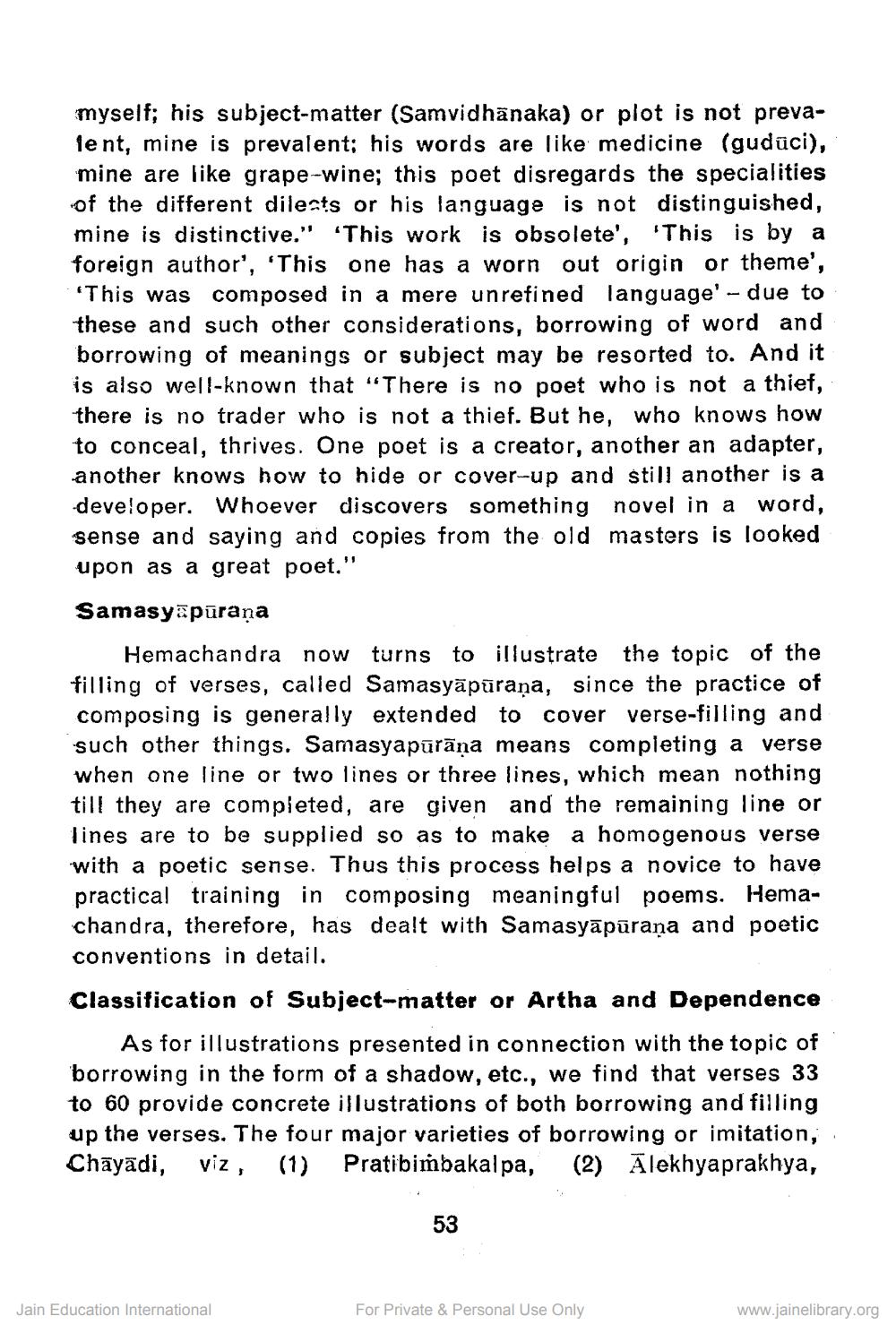________________
myself; his subject-matter (Samvidhanaka) or plot is not prevalent, mine is prevalent: his words are like medicine (gudūci), mine are like grape-wine; this poet disregards the specialities of the different dileats or his language is not distinguished, mine is distinctive." "This work is obsolete', 'This is by a foreign author', 'This one has a worn out origin or theme', "This was composed in a mere unrefined language' - due to these and such other considerations, borrowing of word and borrowing of meanings or subject may be resorted to. And it is also well-known that "There is no poet who is not a thief, there is no trader who is not a thief. But he, who knows how to conceal, thrives. One poet is a creator, another an adapter, another knows how to hide or cover-up and still another is a developer. Whoever discovers something novel in a word, sense and saying and copies from the old masters is looked upon as a great poet." Samasyāpūrana
Hemachandra now turns to illustrate the topic of the filling of verses, called Samasyāpūraņa, since the practice of composing is generally extended to cover verse-filling and such other things. Samasyapūrāņa means completing a verse when one line or two lines or three lines, which mean nothing till they are completed, are given and the remaining line or lines are to be supplied so as to make a homogenous verse with a poetic sense. Thus this process helps a novice to have practical training in composing meaningful poems. Hemachandra, therefore, has dealt with Samasyāpūrana and poetic conventions in detail.
Classification of Subject-matter or Artha and Dependence
As for illustrations presented in connection with the topic of borrowing in the form of a shadow, etc., we find that verses 33 to 60 provide concrete illustrations of both borrowing and filling up the verses. The four major varieties of borrowing or imitation, Chāyādi, viz, (1) Pratibiṁbakalpa, (2) Alekhyaprakhya,
53
Jain Education International
For Private & Personal Use Only
www.jainelibrary.org




